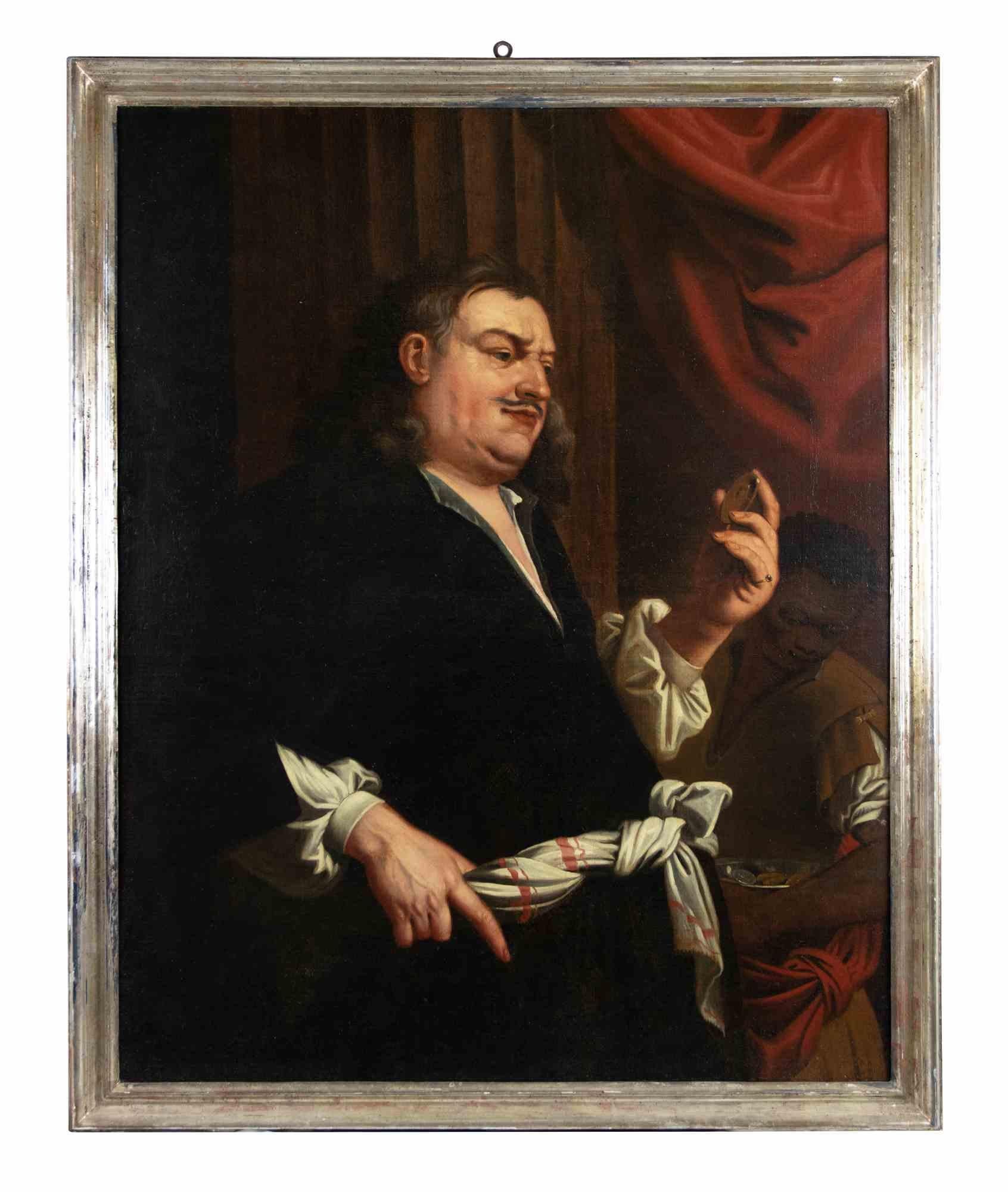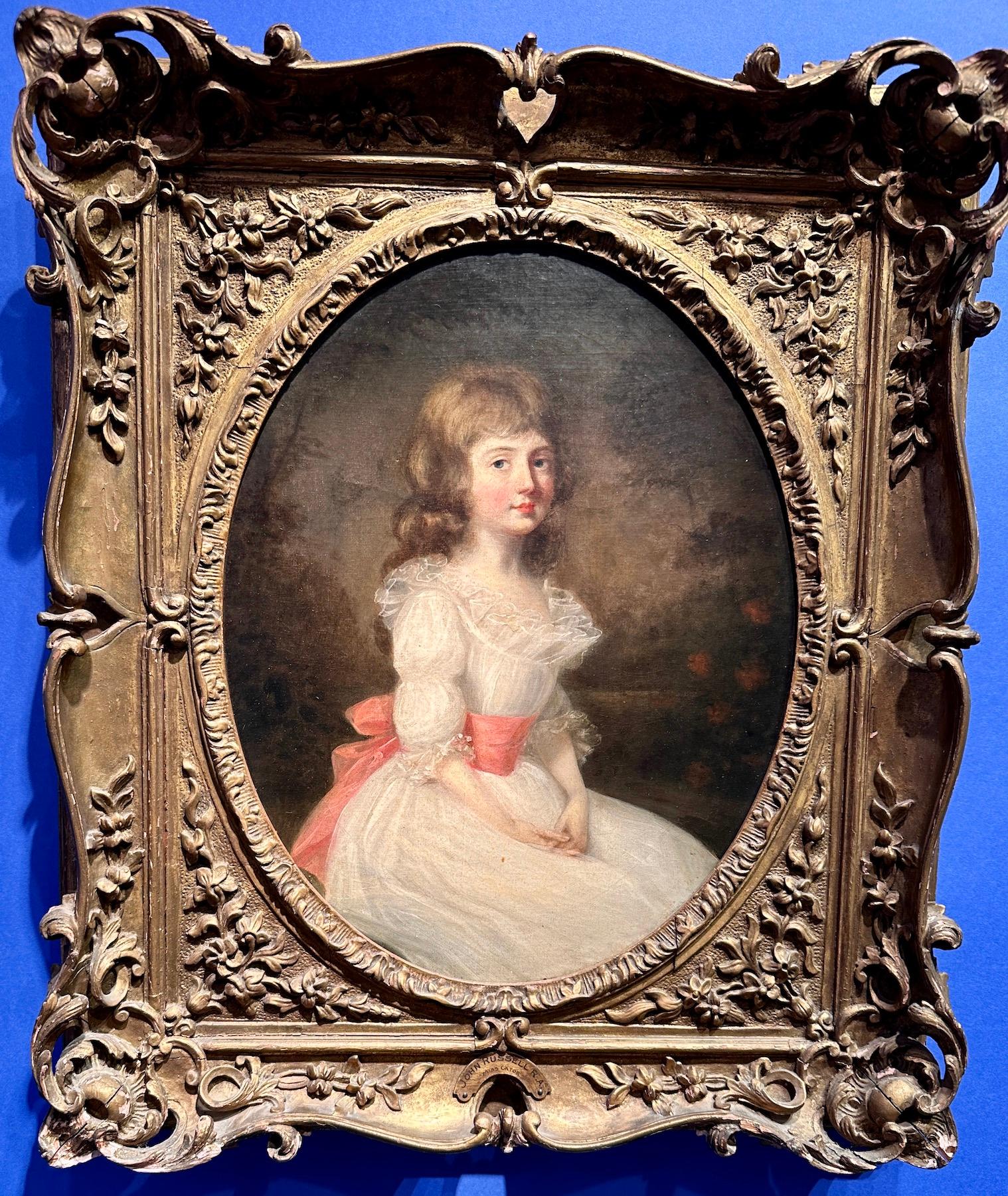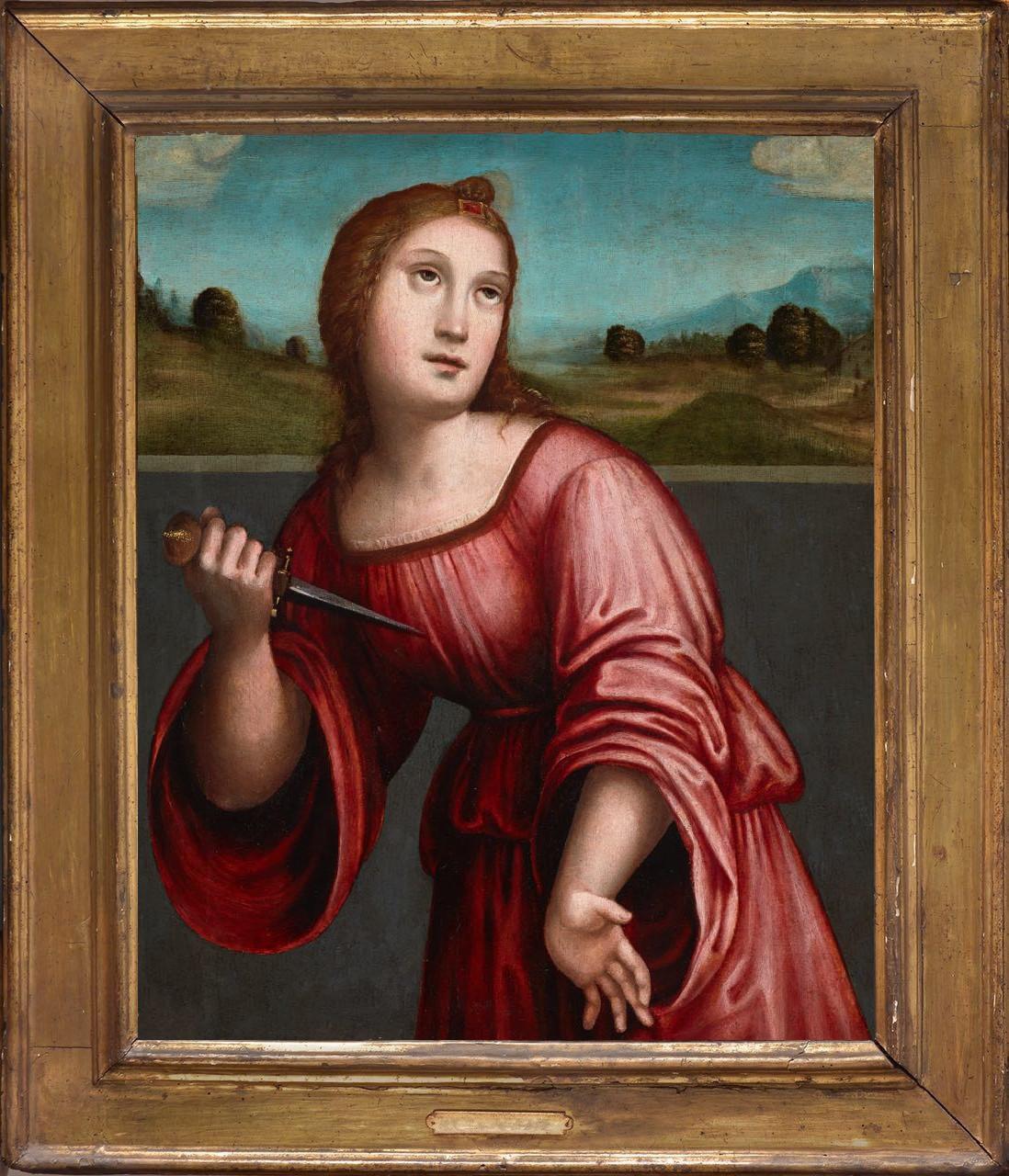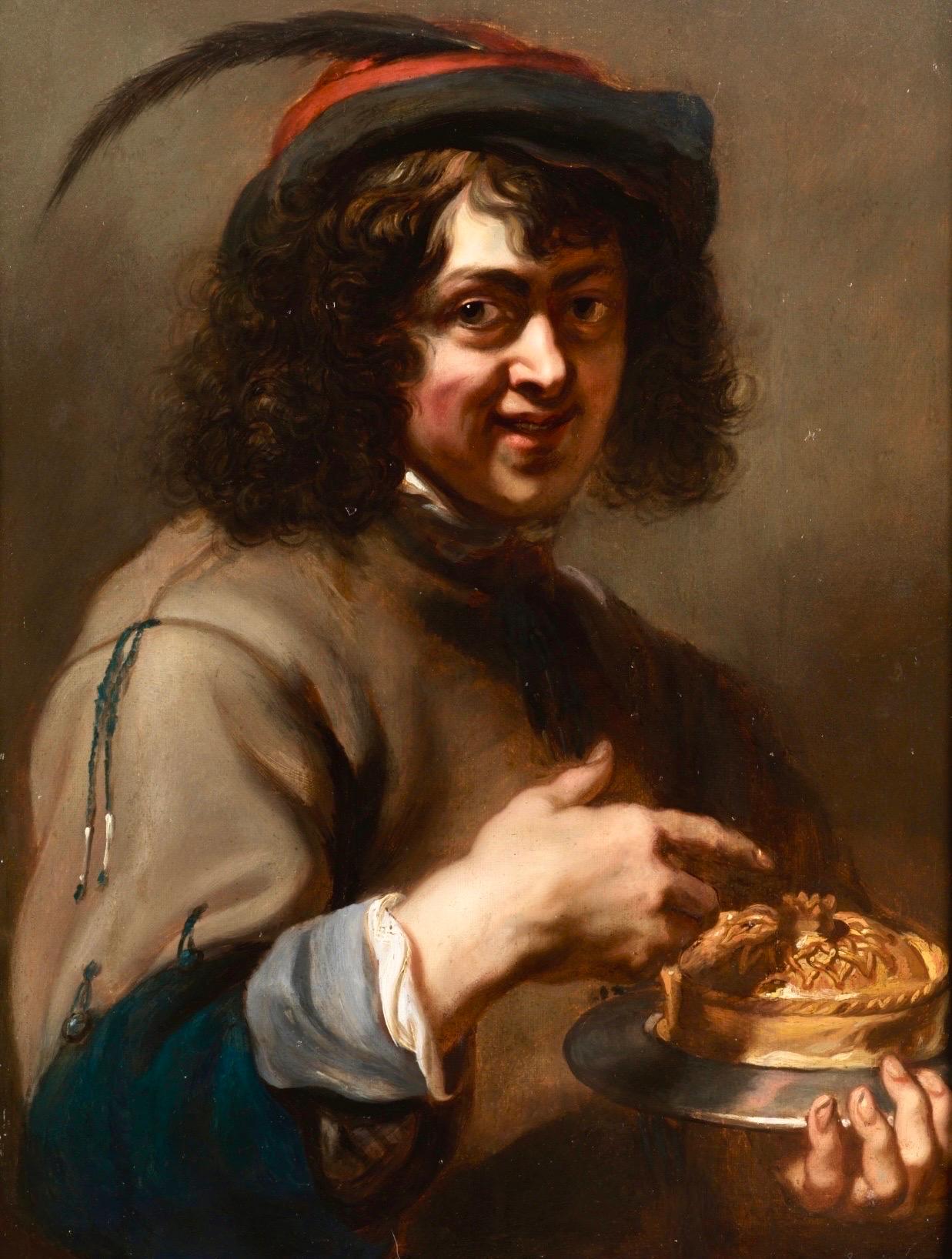Items Similar to Portrait of a young boy holding his pet squirrel
Want more images or videos?
Request additional images or videos from the seller
1 of 6
Joseph HighmorePortrait of a young boy holding his pet squirrel
About the Item
Joseph Highmore (London 1692-1780 Canterbury)
Portrait of a young boy holding his pet squirrel
Oil on canvas
Canvas Size - 30 x 25 in
Provenance
Sale, Sotheby's New York, Old Master Paintings, 21st October 1988, Lot 190, sold for $10,500;
with Julian Simon Fine Art, London;
where purchased by the present owner.
Joseph Highmore (1692-1780) was an English portrait and historical painter, illustrator and author. Highmore was born in London, the third son of Edward Highmore, a coal merchant, and nephew of Thomas Highmore, Serjeant Painter to William III. He displayed early ability but was discouraged by his family from taking up art professionally, and began a legal training instead. At the ending of a clerkship at the age of 17 (during which he continued to attend a drawing academy run by Godfrey Kneller and lectures on anatomy by William Cheselden), he abandoned the law and started to work as a painter. On the revival of the Order of the Bath in 1725, he was selected to paint the knights in full costume. The years 1732 to 1734 were spent on a tour of the Netherlands and France. In the next few years he received patronage from the royal family, but during the 1740s began to cater more for a middle-class clients. In 1762 Highmore sold the contents of his studio and retired to Canterbury, where he lived with his daughter and son-in-law. Highmore died aged 87 on 3 March 1780. He was buried in sheep's wool (to comply with a 17th-century statute to encourage the wool trade) in the fifth bay of the south aisle of Canterbury Cathedral. His wife Susanna Highmore (née Hiller) was a poet, though little of her work was published. His son Anthony Highmore (1719–99) was an artist, one of whose 15 children, Anthony Highmore Jnr. (1758–1829), became a writer on legal affairs and a social activist. In addition to his work as a portraitist, Highmore painted works illustrating biblical subjects, historical painting being a style which Highmore had picked up on his travels in France. One such biblical painting is Hagar and Ishmael, which Highmore donated to the Foundling Hospital for the purpose of decorating its Court Room. The painting is now part of the Foundling Hospital art collection at The Foundling Museum in London. In 1744, Highmore painted a series of 12 paintings after scenes from Samuel Richardson's Pamela, or Virtue Rewarded, which were engraved by Benoist and Louis Truchy. Some of them were displayed within the temporary exhibition, Basic Instincts, curated by Jacqueline Riding at The Foundling Museum from September 29, 2017 to January 7, 2018. The exhibition explored Georgian attitudes to love, desire, and female reputation through the radical paintings of Joseph Highmore. One of the most prominent paintings displayed was The Angel of Mercy (c.1746), which is thought to be a painting draft for a larger piece.
- Creator:Joseph Highmore (1692 - 1780, British)
- Dimensions:Height: 30 in (76.2 cm)Width: 25 in (63.5 cm)
- Medium:
- Movement & Style:
- Period:
- Condition:
- Gallery Location:Stoke, GB
- Reference Number:1stDibs: LU446312096872
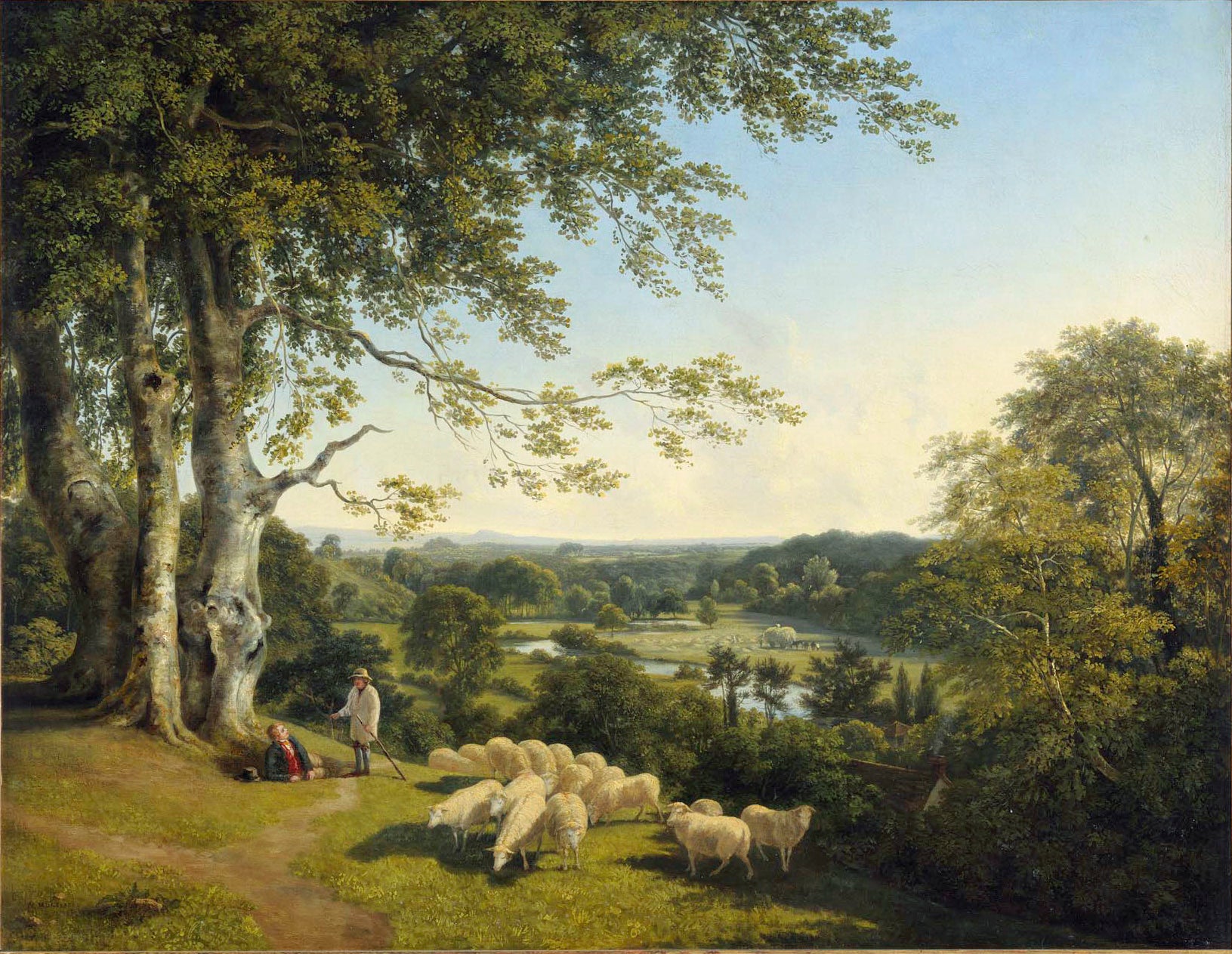
About the Seller
5.0
Recognized Seller
These prestigious sellers are industry leaders and represent the highest echelon for item quality and design.
Gold Seller
These expertly vetted sellers are highly rated and consistently exceed customer expectations.
Established in 2009
1stDibs seller since 2016
148 sales on 1stDibs
Typical response time: 3 hours
Associations
LAPADA - The Association of Arts & Antiques DealersInternational Confederation of Art and Antique Dealers' AssociationsThe British Antique Dealers' Association
- ShippingRetrieving quote...Ships From: Andover, United Kingdom
- Return PolicyA return for this item may be initiated within 14 days of delivery.
More From This SellerView All
- Portrait of a gentleman in red military uniformBy David MorierLocated in Stoke, HampshireDavid Morier (1705-1770) Portrait of a gentleman in red military uniform Oil on canvas Canvas Size - 32 x 24 in Framed Size - 39 1/2 x 31 in Provenance: Sale, Christie's London, 21s...Category
18th Century Old Masters Figurative Paintings
MaterialsOil
- Portrait of a gentleman, traditionally identified as Thomas CareyBy Paul II van SomerLocated in Stoke, HampshireCircle of Paul van Somer (Antwerp c. 1577-1621 London) Portrait of a gentleman, traditionally identified as Thomas Carey (1597-1634), youngest son of Thomas, 1st Earl of Monmouth Oil...Category
17th Century Old Masters Portrait Paintings
MaterialsOil
- Portrait of a young gentleman, seated beside a treeBy John DownmanLocated in Stoke, HampshireAttributed to John Downman (1750-1824) Portrait of a young gentleman, seated beside a tree Oil on canvas Canvas Size - 30 x 25 in John Downman was a fashionable portrait painter in the second half of the eighteenth century and the beginning of the nineteenth. He was born in Ruabon, North Wales, the son of Francis Downman, an attorney of Devonshire stock, and his wife Charlotte, daughter of Francis Goodsend, the private secretary to George I. In 1768 John became a pupil of Benjamin West and the following year attended the Royal Academy Schools. He showed his first portrait at the RA in 1770 and his first subject painting in 1773, exhibiting there until 1819. From 1773-4 Downman, by now married, studied in Rome in the company of Joseph Wright of Derby. By 1777 Downman was living in Cambridge, but the following year set up a studio at Bedford Street, Covent Garden. From 1779-1804 he lived at increasingly fashionable London addresses, including Bond Street, Jermyn Street and Piccadilly. Downman painted few large-scale oil portraits...Category
18th Century Old Masters Portrait Paintings
MaterialsOil
- Self PortraitLocated in Stoke, HampshireFrank Samuel Eastman (1878-1964) Self Portrait Oil on canvas Canvas - 34 1/2 x 26 1/2 in Framed - 40 x 32 in Provenance: by descent from the artist Frank Eastman...Category
20th Century Victorian Portrait Paintings
MaterialsOil
- Figlio & Louille BariatinskyLocated in Stoke, HampshirePrincess Olga Bariatinsky (1881-1974) Figlio & Louille Bariatinsky Oil on artist board Signed with initials lower left Painting Size - 9 1/2 x 7 1/2 in Framed Size - 13 x 10 in Prov...Category
20th Century Figurative Paintings
MaterialsOil
- A greyhound in a landscapeLocated in Stoke, HampshirePieter Frederick Van Os (1808-1892) A greyhound in a landscape Signed 'P. F: Van Os. f 1825' lower left Oil on canvas Canvas Size - 46 x 39 in Framed Size - 51 x 44 in Provenance: C...Category
19th Century Old Masters Animal Paintings
MaterialsOil
You May Also Like
- Fine 17th Century Italian Old Master Oval Portrait of Lady on Copper Wooden FrmLocated in Cirencester, GloucestershirePortrait of a Lady (female saint?) Italian School, 17th century oil on copper, framed frame: 9 x 8 inches board: 5 x 4 inches provenance: private collection condition: very good and ...Category
17th Century Old Masters Figurative Paintings
MaterialsOil
- A Rich Merchant - Painting by Unknown - 18th CenturyLocated in Roma, ITA rich merchant is an original old master artwork realized in the 18th Century. Mixed colored oil painting on canvas depicting a merchant looking at a coin in his left hand. Provena...Category
18th Century Old Masters Figurative Paintings
MaterialsOil
- 18th century Portrait of a young girl, Miss Cator in a landscape, white dressBy John RussellLocated in Woodbury, CTPortrait of a young British Girl, in her white dress with Pink Sash. Choosing to acquire an 18th-century portrait of a young girl by English artist John Russell is an opportunity to...Category
1780s Old Masters Portrait Paintings
MaterialsCanvas, Oil
- Lucretia, by Giacomo Raibolini Francia. Detto il Francia. Oil on panel, framedLocated in Brooklyn, NYGiacomo used to paint with his brother Giulio, identifying their works with the monogram «I I». The strong influence of his father, Francesco, is undeniable in all his works, althoug...Category
16th Century Old Masters Figurative Paintings
MaterialsOil, Wood Panel
- 17th century Flemish Old Master - A young boy enjoying a pie, allegory of tasteLocated in Antwerp, BE17th century Flemish old master painting, Allegory of taste The very fine painting depicts a young boy, cheekily tasting a delicious pie. He's looking at the viewer with eyes twinkl...Category
17th Century Old Masters Figurative Paintings
MaterialsCanvas, Oil
- Portrait of Jean-Baptiste Greuze, painted on linen by his daughter Anna GreuzeLocated in PARIS, FRThis replica of the last self-portrait of Jean-Baptiste Greuze painted in 1804, executed by his daughter Anna at her father's side and recently rediscovered, provides us with a poignant image of the great artist, represented with panache despite the disillusions of life. 1. Jean-Baptiste Greuze Jean-Baptiste Greuze was the sixth child of a roofer from Tournus and retained a certain rusticity in his behaviour from his provincial childhood, beyond his taste for describing picturesque scenes of the countryside. He initially started training with a little-known painter from Lyon, Charles Grandon, before his genius was recognised in Paris where he became a full-time student of the Académie (of Painting) in 1755. He exhibited his work for the first time at the Salon during the summer of 1755, before leaving on a trip to Italy in the company of Louis Gougenot, abbot of Chezal-Benoît. Upon his return to Paris, Greuze became a prolific painter, participating widely in the Salons held between 1759 and 1765, to which he sent no less than 63 paintings: numerous genre scenes (The Marriage Contract, The Beloved Mother), but also portraits of his family circle, of courtiers and art lovers, or of his colleagues. The Academy closed the doors of the Salons to him in 1767 for not having produced his reception piece within six months of his reception, as was the tradition. He worked actively on this painting (Emperor Severus rebukes Caracalla, his son, for trying to assassinate him ) until the summer of 1769, tackling historical and mythological subjects for the first time. Once this was completed, he was then fully admitted to the Academy, but as a genre painter, and not as an historical painter, which had been one of the greatest humiliations of his life. Greuze then refused any participation in events organised by the Academy or its successor, the Academy of Fine Arts until 1800. Abandoning history painting, he gave a new twist to genre scenes, bringing them closer to history painting, as in this pair of canvases which constitutes some of his masterpieces: The Paternal Curse: The Ungrateful Son and The Paternal Curse: The Punished Son . Married in 1759 to Anne-Gabrielle Babuti, the daughter of a Parisian bookseller, his marriage was unhappy and his wife probably frequently unfaithful. The institution of divorce enabled him to record their separation in 1793, keeping his two daughters Anna-Geneviève, born in April 1762, and Louise-Gabrielle, born in May 1764, with him. Little is known about his daughter Anna except that she was herself a painter and lived with her father until his death. It is likely that most of the paintings she produced up to that date were attributed to her father, whose technique she shared to a great extent, making it extremely difficult to establish an autonomous corpus of her paintings. Greuze died in his studio at the Louvre on March 21st 1805. The attention paid to the expressivity of his characters and the emotional charge they convey enabled Jean-Baptiste Greuze to enjoy immense popularity with the eighteenth-century public, and they still constitute Greuze's true modernity. As the artist said, "I dipped my brush in my heart". Greuze was also an exceptional draughtsman and a portraitist of immense talent and exceptional longevity who painted both the Dauphin (the son of Louis XV and father to Louis XVI) and the young Napoleon Bonaparte. 2. Greuze's self-portraits Greuze was very much influenced by Dutch paintings during all his life. While the source of his inspiration for genre scenes can be found in Gerard Dou...Category
Early 1800s Old Masters Portrait Paintings
MaterialsLinen, Oil
Recently Viewed
View AllMore Ways To Browse
Author Portrait
Young Boy
Portrait Poet
18th Century English Portrait
English Portraits 18th
Large Boy
Antique Painting Boy
English 18th Century Portrait Paintings
Portrait 3 Children
Antique Female Portrait Painting
18th Century Large Portrait
Boy Holding
18th C Portrait
Order Of The Bath
Portrait Painting Young Boy
Old Masters For Sale
Antique Pets
18th Century French Portrait Painting

